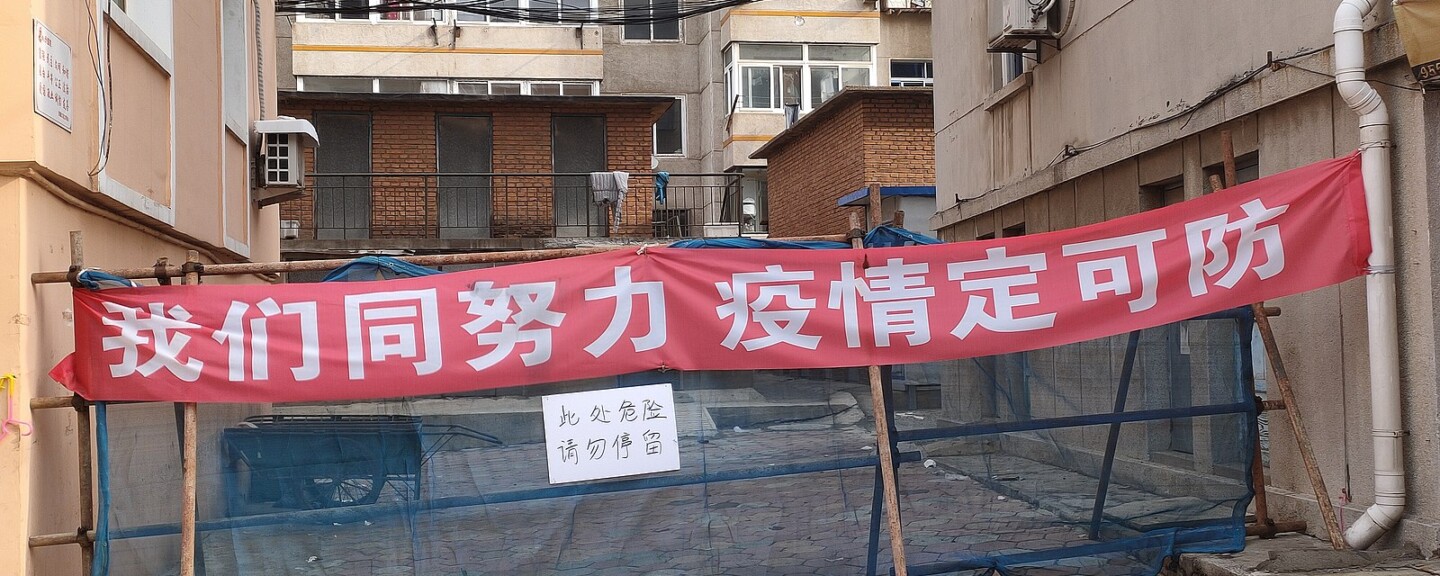Guanchi Zhang, S.J.D Candidate at Harvard Law School, and Changxin Xu, Ph.D. Student in the Political Science Department at Syracuse University, argue that gated residential communities are key to understanding both the success and demise of China’s zero-COVID lockdown policies.
In sharp contrast with the previous zero COVID policy that locked down many cities and frustrated millions, China has eased pandemic controls at a stunning rate. How did Chinese cities sustain costly city-wide lockdowns for such a long time, and why did they suddenly reverse course? The top-down, repressive tendency of the authoritarian regime is insufficient to explain this contrast. Instead, Chinese cities heavily relied on spatial infrastructures (i.e., housing set ups) that divide urban space into manageable fragments to enforce draconian lockdowns that would have been otherwise politically and socially infeasible. These infrastructures, such as gated residential communities (小区xiaoqu), helped relieve the burdens of assisted overstretched state bureaucracy, provided minimum support for urban residents under lockdowns, and blurred enforcement responsibility through flexible policy implementation. Paradoxically, we argue, it is the abuse of, and overreliance on, these spatial infrastructures that contribute to the meltdown of China’s zero COVID policy.
The Chinese state had limited capacity to enforce its heavy-handed zero COVID policy, and it would have been difficult to maintain these demanding policies without the support of proper infrastructure. The downfall of the once prominent “tracking” strategy perhaps best illustrates these limitations. In 2020 and 2021, Shanghai and other Chinese cities carried out highly localized interventions to minimize the need for lockdowns. A mix of high-tech and labor-intensive tools were used to track the whereabouts of patients and their close contacts. In 2022, however, “tracking” ceased to be an effective alternative owing to the skyrocketing demands on technology, government resources, and manpower to track and contain more contagious variants of the virus. Although tools like China’s “health code” app conjure the imagination of an Orwellian surveillance state, current digital infrastructures proved insufficient for the Chinese state to fully control the population and subsequent outbreaks of the virus.
“Blanket” lockdowns are also costly and demanding. During lockdowns, local governments were responsible for frequent, city-wide, free-of-charge COVID tests and the delivery of daily supplies to city residents, most of whom were required to stay at home. Failing to undertake these tasks leads to criticism and punishment of local officials from above. As a result, these arduous tasks compelled already over-stretched local state bureaucracies to turn to and rely on spatial infrastructures readily available in urban China.
One such critical infrastructure is the gated residential community. The gated community is a common form of modern residential neighborhood in urban China. The idea of the Maoist era residential compounds of work units (danwei) has evolved with the emergence of privatized spaces since China’s housing commodification in 1998, which gave rise to enclosed residential areas that provide exclusive amenities and a sense of security to their residents. More important than the physical structures, however, are the social networks that govern gated communities. The rise of the gated community in China has led to a limited degree of self-governance by homeowners. In non-COVID times, the state often granted recognition and limited support to collective action by homeowners, as long as the demands were focused within the community walls and limited to neighborhood affairs. There is anecdotal evidence that in some provinces the number of newly-established community organizations is included in the metrics for local officials’ performance reviews.
During lockdowns, the walls that were used to prevent outsiders and the organizational structures for limited self-governance became a cage for residents. Local governments used a combination of sticks and carrots to recruit grassroots networks of property management firms, Home Owner Associations, and volunteers or social workers to assist with their lockdown efforts. In Xi’an and Shanghai, grassroots networks carried out most of the routine work, including daily COVID tests, purchase and distribution of supplies and groceries, and attention to those in most need such as the elderly. The successful recruitment of community actors allowed the state to reserve important police and public health officials for more emergency or suppressive tasks.
The flexible and informal nature of such recruitment also shielded state actors from blame for misconduct. Chinese cities often made property management firms the “main force” (主体zhuti) in implementing restrictions in their local neighborhoods on behalf of city governments. Yet, there were rarely any clear directives on the distribution of responsibility between these local actors and their superiors. In Shanghai, the city never explicitly delegated policing power to management firms to enforce lockdowns or mandatory COVID testing, but instead used penalties to demand residents’ compliance with orders from management firms. In Xi’an, district governments conversely entrusted property management firms with limited governance functions, but this was arguably a hollow promise; for a while, their personnel were not even granted travel permits during the city-wide lockdown. Still, some property management firms were penalized for the failure to prevent community transmission, as they were legally prescribed to keep neighborhoods as “safe places to live.”
Ironically, the informal and excessive reliance on grassroots organizations became a major point of contention in the last days of the zero COVID policy. After a deadly fire in Urumqi that killed ten residents, an angry public associated the tragedy with the alleged sealing of the residential compound by grassroots organizations. In the following days, residential communities around the country resisted lockdown measures. A widely circulated “guide” taught people how to push back by pointing out the lack of enforcement authority by grassroots organizations and property management firms. These efforts resulted in remarkable success in curbing lockdowns and, eventually, the bottom-up hollowing out of the zero COVID policy. The once-handy spatial infrastructures of Chinese cities quickly turned into a weakness.
Where do we go from here? Discredited but not completely disassembled, the grassroots organizations and networks that grew and expanded under zero COVID could continue to carry out other delegated tasks from higher-ups. It is possible for the state to re-harness them for other pandemic-related policies, such as mass vaccination campaigns. In the long term, it awaits to be seen what impact this development will bring to China’s state capacity and spatial governance in the post-COVID era.


